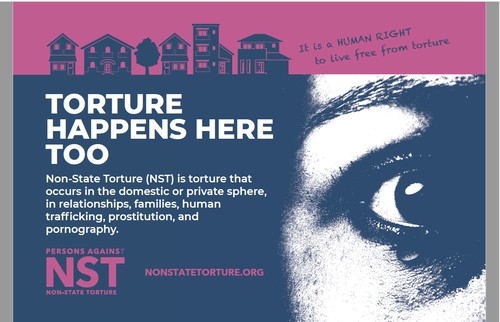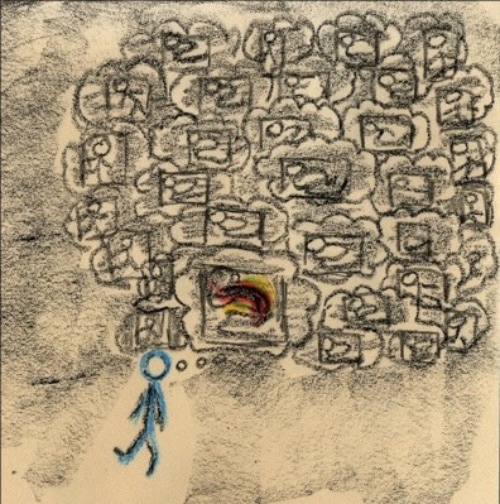On April 19th, Nova Scotians, Canadians, and peoples of other nations were gripped in horror at the massive destruction one violent man inflicted. It was the deadliest mass shooting in Canadian history; with gun-in-hand he killed 12 women, one female youth, and 9 men, breaking the hearts of all who loved them. His rampage began following a violent assault he inflicted on his female partner. Working with other feminists our press release acknowledged that the killings involved femicides and homicides, rooted in misogynistic violence.

This mass shooting added another local and national crisis to the deadly COVID-19 pandemic and to the reality that ‘Not everyone is ‘safe at home’. Trapped by the COVID-19 stay at home policy, reports are telling of increased violence against women and children in Canada, in Argentina, France, Germany, Spain, the United Kingdom, the United States, as well as an increase of over 30 percent in helpline calls in Singapore and Cyprus. All realities mentioned in the UN Women report titled a global shadow pandemic. Closer to our home, the Canadian Minister for Women and Gender Equality, Maryam Monsef got personal. She expressed she didn’t want to be “haunted by those women and those children” as this pandemic of violence rises. The fact is – women are caught in these dual pandemics – the COVID-19 and the shadow pandemic. Wearing masks is a new norm for many, making the COVID-19 pandemic interventions visible. But how are we to care for women and children of the shadow pandemic?
It is this question of how to care that haunts us. Are we feeling for all lives lost and broken hearts – absolutely! But we are also struggling. Aching really with the question of how to respectfully disclose how to give voice about caring for the specific population of women we have come to intimately know. We both grew up in homes filled with ice-cold misogyny that struck day after day with deadly violent force. A rage the community saw as a “family matter.” An excuse that continues to feed the misogynistic and patriarchal discrimination of the shadow pandemic; an excuse that was present almost three decades ago that rocked our worldview. Sara, a Nova Scotian woman, made a late night phone call to us. She said it was her last attempt to reach out for help. Explaining dying by suicide was the only way to end her overwhelming suffering. Believing no one cared, that no one listened, that support systems did not or could not understand.
Sara and Elizabeth have similar stories. Elizabeth also reached out to us for support. Over a decade ago the internet offered this relational connection; today Elizabeth can explain why support systems don’t understand. She says:
“I do speak about torture. Sometimes I feel so isolated…like being in a place and no one talks my language…and I have to keep relating in their language even though it is not my language. It’s a social isolation difficult to describe.”
Elizabeth said each torture ordeal is trapped in a separate torture box in her mind. Saying of her drawing that this “is how the weight of unspoken…torture ordeals felt.”

This is what haunts us – the knowledge that women and children are trapped or captive in the safe at home COVID-19 directive, struggling to survive acts of violence that amounts to torture. As an unacknowledged crime in Canada, in the United Kingdom, and in many other nations, the torture-talking knowledge Elizabeth and Sara needed to prevent their social isolation is therefore missing. Such missing knowledge can place women so victimized at risk. For instance, one intervention suggested when reaching out to a vulnerable woman by phone is to ask questions she can answer with a “yes” or “no.” The risk being that violent perpetrators do listen in on telephone calls women receive. They also can force a trapped woman to phone others to say all is well. We must not underestimate the absoluteness of misogynistic hatred.
Sara did not die. Travelling with her through her recovery, she unravelled being born into a family that tortured and trafficked her since she was tiny. Jolts of electric shocking in her mouth, on her nipples, and inside her vagina became normal. As was “tub-drowning.” She described her terror when held under water until near-death. When saying she was taken to “parties,” we came to understand parties were organized family and group torture gatherings. Sara, as a child, as a captive young woman, was trapped. Children are trapped and tortured in homes as evidenced in present day media in Canada and in the United Kingdom. There is ample reason to suggest the COVID-19 stay at home directive increases the risks of the torture and cyber trafficking of victimized children.
How to care in the aftermath of the worst massive gun combined femicides and homicides ever committed in Canada? How are we to care for all trapped in the shadow pandemic of violence against women and children that the COVID-19 pandemic has unsilenced? Solutions now and for the future:
- Canada needs to develop a list of signs that raise warning alerts about risks of violence and also permits police to disclose if a partner has a history of domestic violence or of violent acts. Studying, for example, how the Domestic Violence Disclosure Scheme—known as Clare’s Law—in the United Kingdom and Wales has worked for a number of years. Clare’s Law is now being implemented or considered in various Canadian provinces such as in Newfoundland and Labrador;
- In Nova Scotia, an inquiry is required that includes a feminist analysis to address the national and investigating police force betrayal when failing to acknowledge and name the killings—the femicides and homicides—as rooted in misogyny—rooted in the hatred of women and girls;
- Truth-telling about the misogynistic discrimination and femicidal violence of the shadow pandemic requires including and understanding that torture is a distinct form of violence that is inflicted in the domestic relationships. This requires specific acknowledgement so the torture talking of women and children will be understood when reaching out for help;
- Working on safety plans such as gaining hotel spaces for fleeing women, to replace reduced safe house services during the COVID-19 pandemic, is one intervention example;
- Ensuring torture, known as non-State torture when perpetrated by private persons or groups, is specifically criminalized to increase the potential for detection and prevention of such an on-going crime. This would assist developing insights into the torturers’ actions that promote the risks of suicide conditioned femicide in the girls or women they torture. Women tell us that when they were young they were told they must die by suicide if they ever told on those who tortured them. This is what is meant by suicide conditioned femicide;
- Participating to support the global Every Woman Treaty initiative to establish a new international legally binding treaty on violence against women and girls as outlined in their Safer Sooner report. This would give women a treaty to attach a complaint to when their country failed to take action to protect them from many forms of violence including non-State torture; and
- Attention that focused on violence prevention by promoting human right equality and healthy relationship classes from the youngest of ages.
As for Sara, she says, “I was born an it. I don’t want to die an it.” She no longer wants the torture she survived silenced, she wants it criminalized as torture.
Are you facing intimate partner violence? Here are some Nova Scotia resources that can help as compiled by the CBC
This article was first published on the excellent FiLiA website. It’s re-published here with the kind permission of the authors.

Jeanne Sarson, MEd, BScN and
Linda MacDonald, MEd, BN
Co-founders Persons Against Non-State Torture (NST)
Human Rights Defenders
361 Prince Street, Truro, NS, Canada B2N 1E4
P: 1.902.895.6659 | C: 1.902.956.2117 | twin2@eastlink.ca
www.nonstatetorture.org
contact@nonstatetorture.org
With a special thanks to our generous donors who make publication of the Nova Scotia Advocate possible.
Subscribe to the Nova Scotia Advocate weekly digest and never miss an article again. It’s free!



